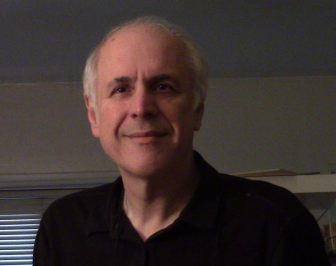
It’s been hyped as “revolutionary,” a “landmark” and a law that “blows up the nation’s troubled foster care system.” But the so-called Family First Preservation Services Act is none of those things. Yes, the law allows some federal money formerly limited to foster care to be shifted into better alternatives. But the limits on what can be funded are so severe that the Congressional Budget Office estimates that, out of the billions of federal dollars lavished on foster care, only $130 million per year will be moved into better options.
Some states and localities already have comprehensive waivers that allow far more flexibility in child welfare spending than Family First. Some of these waivers have made a real difference. But Family First will replace those waivers, leaving those places worse off unless Congress passes legislation to extend the waivers.
THE MOUSE THAT MAY ROAR

Richard Wexler
But while everybody was paying attention to Family First, the federal Administration for Children and Families (ACF) made a policy change that has the potential to do vastly more to help children and families. Indeed, if Family First is the lion that squeaked, this policy change is the mouse that may roar: The federal government has just made it easier for states to provide what I have come to believe is the most important single service to help families who come into contact with child protective services agencies: high-quality legal representation.
Nearly 30 years ago, I wrote a book about child welfare, “Wounded Innocents.” It is filled with recommendations for changing laws. I stand by those recommendations. But what I’ve realized in the years since is that changing laws means nothing if there’s no way to enforce the changes. You can raise the absurdly low standard of proof for removing a child or narrow the absurdly broad definitions of “neglect” in state laws, but as long as the judge is hearing only the child protective services (CPS) agency’s side of the story, she or he almost always will rubber-stamp the agency, no matter what the law says.
That’s typically what happens. Technically, the family might have a court-appointed lawyer — or they might not; it varies from state to state. But even when there’s a lawyer, it’s usually an overworked public defender with an enormous caseload who either just met his or her client five minutes before the first court hearing or wasn’t appointed until after that hearing, when it’s often too late. In most of the country most of the time, families up against CPS are, literally, defense-less.
But in a few places it’s different; most notably in New York City. Thanks to what might best be called a series of fortunate events and thanks to the vision and courage of a child welfare leader I’ve often criticized, John Mattingly, most families in New York City get a high-quality defense team: a lawyer with a reasonable caseload, a social worker and often a parent advocate, someone who’s been through the system and can help guide families caught up in it. The method was pioneered by the Center for Family Representation (CFR).
HOW IT HELPS CHILDREN
As CFR’s director, Michele Cortese explains:
“Over half of CFR’s clients’ children never enter foster care, and of those that do, their lengths of stay in care are far shorter than they were before CFR, and they rarely re-enter care. We estimate we’ve saved $37 million in foster care costs, but more important, we’ve saved hundreds of children from the devastating impact of being taken from their families, schools, friends and communities when that was not necessary. …”
Although the New York City system still has many serious problems, it consigns children to the chaos of foster care at one of the lowest rates in the nation.
And no, that doesn’t mean family defense teams got a bunch of bad parents off. Standard measures of child safety have remained largely constant. That means thousands of children have been spared all the trauma of needless foster care and the risk of abuse in foster care itself, with no compromise of safety.
The model is so successful that the founder of The Bronx Defenders, another of the institutional providers in New York City, is using foundation funding to replicate it in Oklahoma.
And for those who are still worried: The federal policy change provides the same level of reimbursement — 50 percent — for lawyers who represent children. This does no more than level the playing field, since these funds have always been available to pay for a CPS agency’s own lawyers.
ACF achieved this without a new law or even a new regulation. With a simple change to its Child Welfare Policy Manual, ACF reinterpreted the services that qualify for what are called “Title IV-E” funds under existing regulations to include lawyers for children and families. (Although IV-E is best known for helping states pay for foster care, it also can cover certain “administrative” costs.)
BUT MONEY ISN’T THE BIGGEST OBSTACLE
That’s the good news. The bad news is that the biggest obstacle to this kind of representation isn’t money. It’s the simple fact that it requires people with power to share it.
Child welfare agency leaders who support high-qualify family defense are supporting people who will, in effect, look over their shoulders and, often, tell them they’re wrong. In New York, for example, that’s meant that, in hundreds of cases, judges send children back home at the very first hearing, because good family defense teams came up with better alternatives to foster care or persuaded the judge that the placement was wrong in the first place.
But John Mattingly was willing to support high-quality family defense when he ran New York’s Administration for Children’s Services. That’s partly because of what he saw when he studied New York City child welfare as part of a special advisory commission before he took the job. The commission issued a special report blasting the routine injustice it saw meted out at the time by the city’s family courts.
When he became ACS commissioner, Mattingly recognized that, though high-quality family defense might make his job more difficult, it made the lives of children a lot better. And he had enough confidence in his own agency to believe it could withstand the scrutiny and even learn from it.
Most leaders don’t have that kind of confidence. Even many reformers shy away from such challenges. Their view boils down to: But we’re the good guys, we respect families, we don’t need anyone telling us to do better.
And the worse an agency is performing, and the more arrogant its leadership, the less it wants anyone to even see, much less challenge, what they’re doing. So when Monroe County (metropolitan Rochester), N.Y., had a chance to provide this high-quality legal representation at no cost at all through a state grant, it actually turned the money down. So did Dutchess County, N.Y. The grant money went unused because no county was both willing and able to use it.
Implementing the federal funding change will be complicated, requiring changes in the mechanics of funding family defense in many communities. Professor Vivek Sankaran of the University of Michigan Law School has outlined those challenges and how they can be overcome.
In criminal justice a new group of district attorneys has taken office with a new attitude: Their job is not to stack the deck against the accused but to seek justice.
A similar change is needed in child welfare. That’s why agencies that are really about putting children first will put children ahead of their own comfort and convenience and leap at the chance to make high-quality family defense a standard part of child welfare.
Richard Wexler is executive director of the National Coalition for Child Protection Reform.































